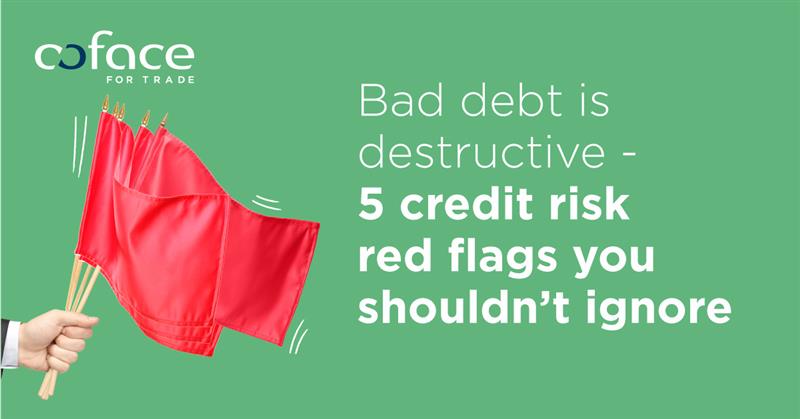Blog
Bad debt destroys businesses. Don’t let yours be a victim.
Starting a business is a moment to celebrate but making it to five years is an even greater achievement. The sobering fact is that only 42% of businesses ‘born’ in the UK in 2013 were still trading in 20181 and bad debt is thought to account for one quarter of failures.
Bad debt is destructive for a number of reasons, especially the impact it has on cashflow. As well as making it harder to find the money for running costs such as salaries and utility bills, poor cashflow limits your ability to buy raw materials or invest. And this at a time when you need to increase sales to survive. For instance, a business with an average net profit margin of 5%, would have to generate £200,000 worth of extra business to replace a bad debt of £10,000.
But while bad debt is a risk for any business that supplies goods and services on credit terms, there are things that you can do to improve the odds. Most importantly, you can be on the lookout for signs a customer may be struggling to meet their commitments and likely to default.
Here are five red flags for bad debt:

The customer asks for more generous terms
Be wary when a customer suddenly asks to extend their credit or requests more time to settle their account. Make it a rule not to extend credit to customers who have not built up a good payment record and always check the credit history of new customers.
Their payment times start to slip
Late payment is a sure sign that a customer is experiencing cash flow problems and prioritising their creditors so be alert to changes from the usual pattern, including queries and disputes. Unfortunately, suppliers are often at the back of the queue behind organisations like banks so you need to do what you can to ensure your voice is heard. Be clear up front that you will use the law to claim interest and compensation for debt recovery costs and chase up invoices promptly.
Deteriorating service
They may be customers but you should still expect professionalism and courtesy from businesses with whom you trade so don’t close your eyes to empty promises or unreasonable behaviour. When a contact repeatedly fails to return your calls or experienced staff leave without warning, it could be a sign of more serious problems.
A financial shock hits their supply chain
The collapse of Carillion is a notorious example of how a financial shock can start a tidal wave along the supply chain, especially if the failed company specialised in complex, projects with long lead times. It’s worth finding out as much as possible about your customers’ customers and the extent of their financial exposure.
They operate in a high-risk sector
Trade risk will ebb and flow depending on the wider economy but sectors can face particular challenges such as production overcapacity, scarcity of raw materials or a speculative bubble which distorts the market. It doesn’t mean that your customer will be affected but if they operate in a high-risk sector you may still want to reassure yourself of their financial stability.
By heeding these warning signs, you can protect your business from the potentially ruinous impact of a bad debt but the good news is that you don’t have to do it all alone.
Working with Coface will give you access to information about more than 80 million companies worldwide so you can focus your attention on the best prospects. And you have the peace of mind that if the worst happens, Coface will reimburse the losses promptly so your business can continue to trade.
Related resources
7 credit management tips for export success
In business risk and reward are two sides of the same coin, and that’s especially true when exporting. But while you can’t avoid all risk, you can minimise it and be prepared for it.
19 March, 2021
Trade Credit Insurance Explained – with working examples
Credit insurance protects you against bad debt. So if the worse happens, you still get paid.
18 March, 2021
Have you got the right risk strategy in place?
With a limited risk strategy managers can find themselves trapped in a holding pattern while their competitors forge ahead.
01 March, 2021